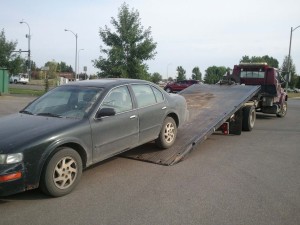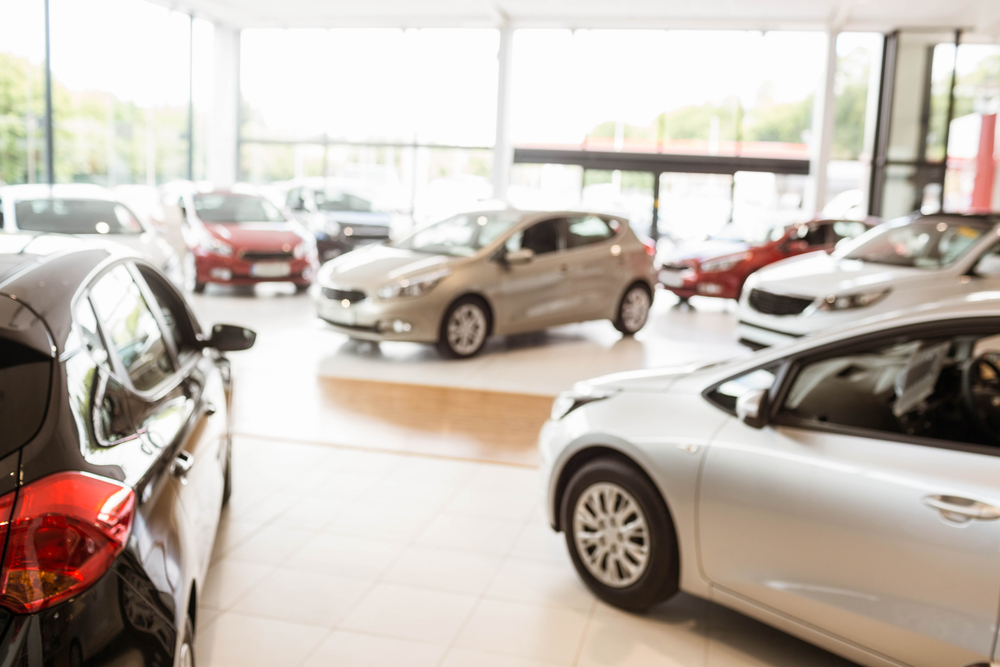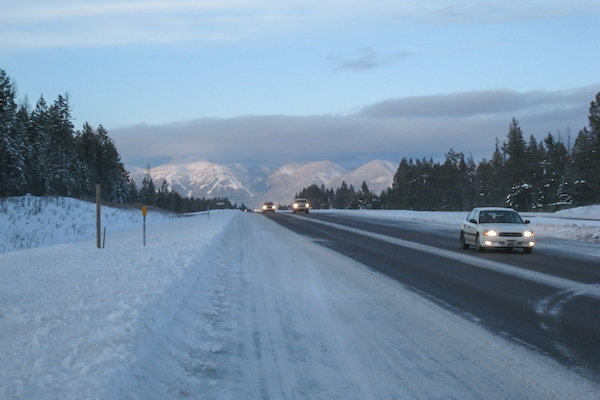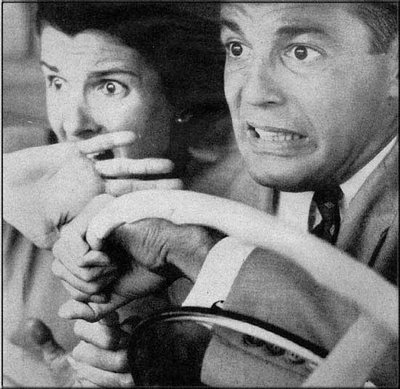What You Should Do if a Breakdown Happens on the Highway
Imagine you’re rushing to work one day, but moving at a crawling pace seeing nothing but a tractor  trailer or a ludicrous license plate in front of you. And now, all of a sudden, you notice steam rising from your engine hood. Not good. Or let’s say you’re taking a leisurely drive, and you notice a young mother or elderly couple stranded at the roadside. These scenarios aren’t pleasant, but they do happen and they could involve you. Fortunately, you can manage a car breakdown on the highway if you know what to do, and how to do it safely.
trailer or a ludicrous license plate in front of you. And now, all of a sudden, you notice steam rising from your engine hood. Not good. Or let’s say you’re taking a leisurely drive, and you notice a young mother or elderly couple stranded at the roadside. These scenarios aren’t pleasant, but they do happen and they could involve you. Fortunately, you can manage a car breakdown on the highway if you know what to do, and how to do it safely.
Thinking on the Fly
Before turning into a highway hero, however, you need to bring yourself down to Earth. A breakdown can turn ugly, even if you’re a car enthusiast who knows a thing or two about auto repair. So the lesson here, is not to dive first when confronted with a car mishap. You need to practice some safe driving tips when these emergencies take place.
Assess the situation at hand
The first thing you need to do in an emergency situation is to observe what’s taking place. This will take attentiveness. If the problem involves you, keep all senses awake. Are there unusual sights, such as smoke or emergency lights? Are there strange sounds, such as hissing, squealing or noises that sound like a gun going off? If it involves someone else, check to see the state of their vehicle as well as the driver/passengers. Are they just pulled aside and look calm? Or do you notice the vehicle or its occupants are in serious shape (ie. fire, physical damage, injured driver or passenger). The more details you can soak in, the better.
Assess the level of risk
Your ability to make quick observations is crucial, because it allows you to determine the level of risk involved. Understanding these risks are essential for safety. Highways are not like residential streets – you’ve got vehicles moving at 100km+/h, not to mention construction zones and risky drivers sharing the asphalt with you. Pulling over into the shoulder (or having to stop in the middle of the road) requires your full attention and awareness of what others are doing. Even when pulled over, you now have to deal with the breakdown itself, and that too can be risky.
Generally, once a car is pulled over (and switched off in the case of an engine overheating), the situation becomes less hazardous, but not completely safe. Maneuvering around a car in a shoulder lane is always risky, because of the close proximity to moving cars in the nearby lane. And in the case of being stuck in the middle of a lane, you are a hazard to other vehicles in the same way they are a danger to you. So under all circumstances, you need to see the immediate risks and base your decisions around them.
Assess your ability to fix
If the situation is one you can safely take care of yourself (and you should be brutally honest with yourself here), you now need to determine how much you can do to resolve it. Some of you have experienced fixing car parts on roadways before – a common one being the replacement of a flat tire. If it’s something you can do safely, then you can save yourself time and money. But you have to understand that in the majority of cases, a mechanic will be your best resort. Unless you’re carrying a toolbox full of equipment, it’s unlikely that you’ll be able to make major repairs on the road.
 Scenarios Not Unfamiliar to the Highway
Scenarios Not Unfamiliar to the Highway
Now it’s worth taking a look at what situations you encounter on the roads. There are tons of reasons why breakdowns happen, but the conditions surrounding them are quite familiar. And if you face a breakdown in the future (hopefully you won’t), it will probably occur in one of three ways.
Stuck in the Shoulder
You’ll probably have to miss a day of work or arrive to your function late, but at least you’re out of the way. You can breathe easy, but still follow these steps:
- Stay inside – If you’re on a rural highway with light traffic, you can probably step out of your car. Otherwise, it’s better to remain inside, especially on busy, urban roadways. Police cars and tow trucks are usually out on the roads looking for stranded motorists, so you probably won’t have to wait too long for help.
- Call for help – If you are in a rural area and can’t address the breakdown, call your roadside assistance service, or dial 9-11 if there’s a serious emergency. In an urban area, you may not need to call if the highway you’re on is busy (you will be spotted fairly quickly).
Someone else stuck on the shoulder
It’s not uncommon to see others stranded on the roadside from time to time. The response you have in such instances will differ from another driver. But consider these words of wisdom:
- Take notes – If you think a car’s occupants might be in serious trouble, you should “take notes”. In other words, identify where you are, what time it is, the car make/model the occupants themselves and what you observe. Doing this is very important if it you’re far away from a city or town.
- Make a phone call – If possible, pull over or make a gas station stop to call roadside assistance or 9-11 about the breakdown. Give them all the information and details you collected.
- Get out of harm’s way if you stop – If you think you can help, make sure to pull off into the shoulder ONLY if it is clear to do so. If you can’t, then collect details and call for professional help. Once pulled over, try to get out from the passenger door instead of the driver side door. Check on the driver and passengers to see if they’re okay, and don’t hesitate to call 9-11 if necessary. Also, don’t attempt to fix something you can’t – it’s much better to call for help.
Stranded in a lane
Sometimes you just don’t have enough time to get to the shoulder. This is a worst case scenario. If this happens to you, it’s not the end of the world, but you need be extremely cautious of what you do.
Here’s what you’ll need to do.
- Put your emergency lights on – Emergency lights are a universal sign of trouble. Turn them on. It should also be noted that steady driving is important here – don’t swerve and make wild turns in attempt to get to the shoulder lane. Stay calm, drive forward, and turn on your lights. Other drivers will respond by giving you space.
- Pop the hood – Make sure to pop the hood as well since this also indicates that you are experiencing a breakdown.
- Don’t get out! – If you’re stuck dead in the middle of the road with heavy traffic around you, don’t leave your vehicle. Stay inside and wait for help to arrive.
Stay Out of Harm’s Way
A car breakdown on the highway is no fun, whether it happens to you or someone else. Additionally, they carry a great deal of risk. That`s why you need to be careful no matter what situation you stumble upon. With that said, you will have to accept that some breakdowns are too far beyond your control, and you’ll have to rely on professional help (tow trucks) to clear the mess. The takeaway of this post, however, is that highway breakdowns are inconveniences that you can resolve quickly and safely. All it takes is a bit of knowledge on how to handle them.






